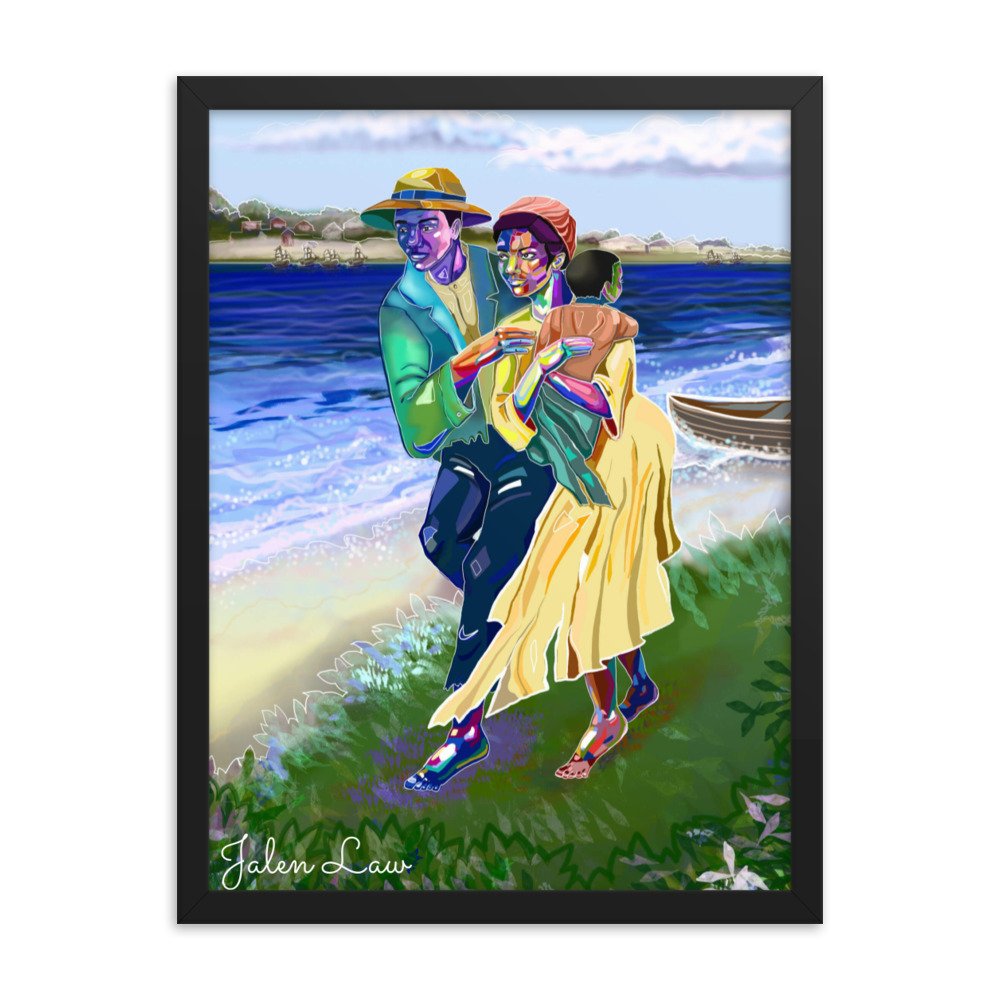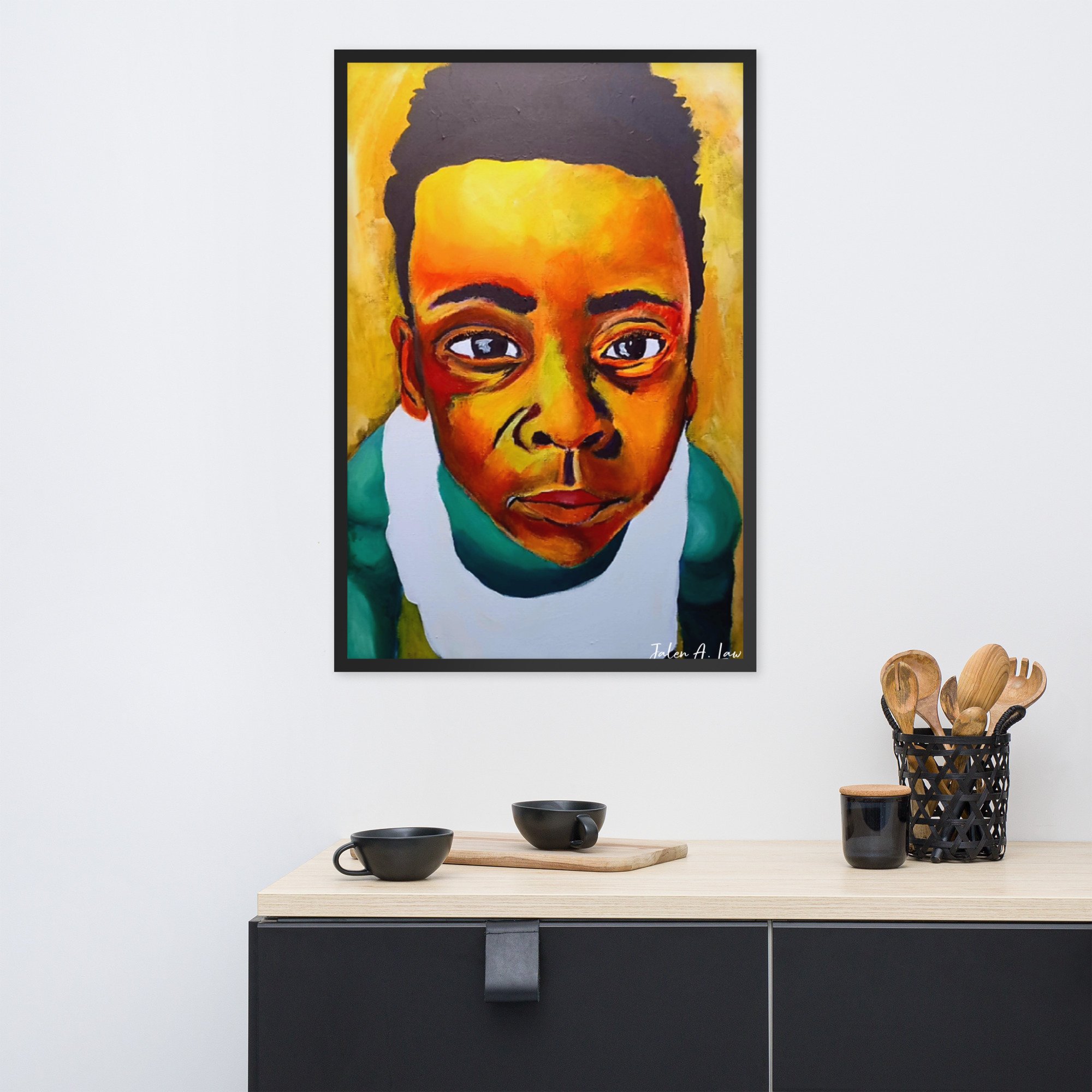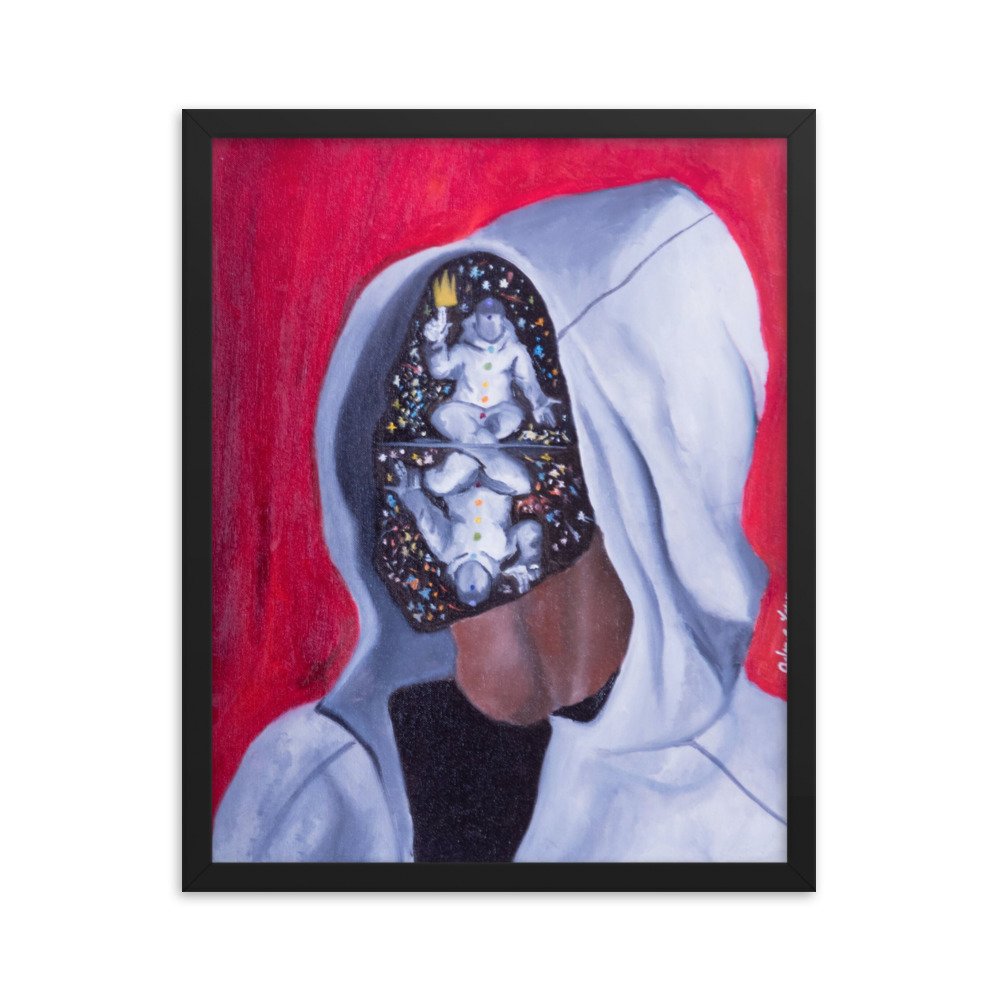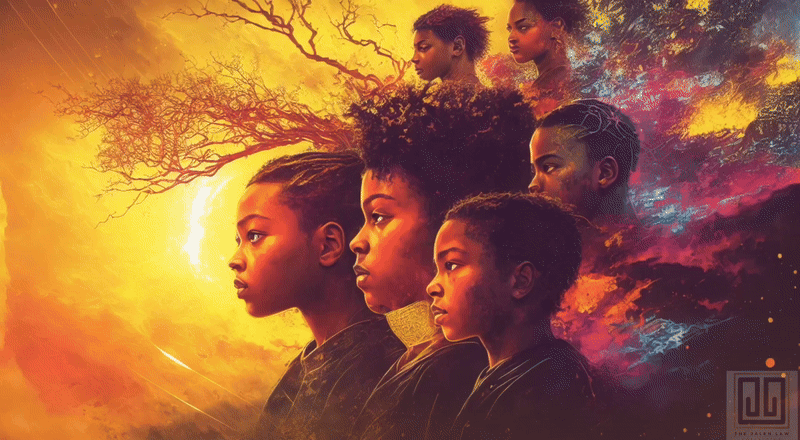 Image 1 of 2
Image 1 of 2

 Image 2 of 2
Image 2 of 2



An Ode to Freedom (Limited Edition Prints)
from $250.00
This concept is dedicated to the Stanford family. Fugitive slaves who escaped from the horrors of chattel slavery to Canada only to be recaptured by a slave catcher, however saved by Abolitionist William Wells Brown and the citizens of the then Buffalo community. During the autumn of 1836, a slaveholder by the name of Bacon Tate, from Tennessee came to Buffalo in search of fugitives from Slavery. Tate was a man who had long been engaged in the slave-trade, and previous to that had been employed as a negro-driver. In these two situations he had gained the name of being the most complete "negro-breaker" in that part of Tennessee where he resided. He was as unfeeling and as devoid of principle as a man could possibly be. Through Tate's network of spies he recaptured Stanford, his wife and six week year old child in St. Catherine's, Canada.
With the help of the Stanford's neighbors they were able to track the kidnappers trail and altered the African-American community as the community were noted for their promptness in giving aid to fugitives. With the help of Williams Wells Brown and the aid of six others they rescued the Stanford's. While in the process of getting the family on a ferry back to Canada, Brown and his men (at this time 50 able bodies men) would fight through the streets of Buffalo against Tate, the sheriff and his posse with clubs, knives, and pistols. In the midst of the fight, a white lawyer named pepper would provide support for the men protecting the Stanford's. As the officers would arrest any of the men, he would step up and ask the officer if he had a "warrant to take that man;" and as none of them had warrants, and could not answer affirmatively, he would say to the colored man, "He has no right to take you; knock him down."
As the men finally made it to the ferry, another fight would ensue with the Sheriff's posse. Here another battle was to be fought, before the slaves could reach Canada. The blacks were commanding the ferryman to carry them over, while the whites were commanding him not to. While each party was contending for power, the slaves were pushed on board, and the boat shoved from the wharf. Many of the blacks jumped on board of the boat, while the whites jumped on shore. When the boat arrived to Canada, Mrs. Stanford, as she stepped on the shore, with her child in her arms, exclaimed, "I thank God that I am again in Canada!"
With the help of the Stanford's neighbors they were able to track the kidnappers trail and altered the African-American community as the community were noted for their promptness in giving aid to fugitives. With the help of Williams Wells Brown and the aid of six others they rescued the Stanford's. While in the process of getting the family on a ferry back to Canada, Brown and his men (at this time 50 able bodies men) would fight through the streets of Buffalo against Tate, the sheriff and his posse with clubs, knives, and pistols. In the midst of the fight, a white lawyer named pepper would provide support for the men protecting the Stanford's. As the officers would arrest any of the men, he would step up and ask the officer if he had a "warrant to take that man;" and as none of them had warrants, and could not answer affirmatively, he would say to the colored man, "He has no right to take you; knock him down."
As the men finally made it to the ferry, another fight would ensue with the Sheriff's posse. Here another battle was to be fought, before the slaves could reach Canada. The blacks were commanding the ferryman to carry them over, while the whites were commanding him not to. While each party was contending for power, the slaves were pushed on board, and the boat shoved from the wharf. Many of the blacks jumped on board of the boat, while the whites jumped on shore. When the boat arrived to Canada, Mrs. Stanford, as she stepped on the shore, with her child in her arms, exclaimed, "I thank God that I am again in Canada!"
Size:
Get notified by email when this product is in stock.
This concept is dedicated to the Stanford family. Fugitive slaves who escaped from the horrors of chattel slavery to Canada only to be recaptured by a slave catcher, however saved by Abolitionist William Wells Brown and the citizens of the then Buffalo community. During the autumn of 1836, a slaveholder by the name of Bacon Tate, from Tennessee came to Buffalo in search of fugitives from Slavery. Tate was a man who had long been engaged in the slave-trade, and previous to that had been employed as a negro-driver. In these two situations he had gained the name of being the most complete "negro-breaker" in that part of Tennessee where he resided. He was as unfeeling and as devoid of principle as a man could possibly be. Through Tate's network of spies he recaptured Stanford, his wife and six week year old child in St. Catherine's, Canada.
With the help of the Stanford's neighbors they were able to track the kidnappers trail and altered the African-American community as the community were noted for their promptness in giving aid to fugitives. With the help of Williams Wells Brown and the aid of six others they rescued the Stanford's. While in the process of getting the family on a ferry back to Canada, Brown and his men (at this time 50 able bodies men) would fight through the streets of Buffalo against Tate, the sheriff and his posse with clubs, knives, and pistols. In the midst of the fight, a white lawyer named pepper would provide support for the men protecting the Stanford's. As the officers would arrest any of the men, he would step up and ask the officer if he had a "warrant to take that man;" and as none of them had warrants, and could not answer affirmatively, he would say to the colored man, "He has no right to take you; knock him down."
As the men finally made it to the ferry, another fight would ensue with the Sheriff's posse. Here another battle was to be fought, before the slaves could reach Canada. The blacks were commanding the ferryman to carry them over, while the whites were commanding him not to. While each party was contending for power, the slaves were pushed on board, and the boat shoved from the wharf. Many of the blacks jumped on board of the boat, while the whites jumped on shore. When the boat arrived to Canada, Mrs. Stanford, as she stepped on the shore, with her child in her arms, exclaimed, "I thank God that I am again in Canada!"
With the help of the Stanford's neighbors they were able to track the kidnappers trail and altered the African-American community as the community were noted for their promptness in giving aid to fugitives. With the help of Williams Wells Brown and the aid of six others they rescued the Stanford's. While in the process of getting the family on a ferry back to Canada, Brown and his men (at this time 50 able bodies men) would fight through the streets of Buffalo against Tate, the sheriff and his posse with clubs, knives, and pistols. In the midst of the fight, a white lawyer named pepper would provide support for the men protecting the Stanford's. As the officers would arrest any of the men, he would step up and ask the officer if he had a "warrant to take that man;" and as none of them had warrants, and could not answer affirmatively, he would say to the colored man, "He has no right to take you; knock him down."
As the men finally made it to the ferry, another fight would ensue with the Sheriff's posse. Here another battle was to be fought, before the slaves could reach Canada. The blacks were commanding the ferryman to carry them over, while the whites were commanding him not to. While each party was contending for power, the slaves were pushed on board, and the boat shoved from the wharf. Many of the blacks jumped on board of the boat, while the whites jumped on shore. When the boat arrived to Canada, Mrs. Stanford, as she stepped on the shore, with her child in her arms, exclaimed, "I thank God that I am again in Canada!"











